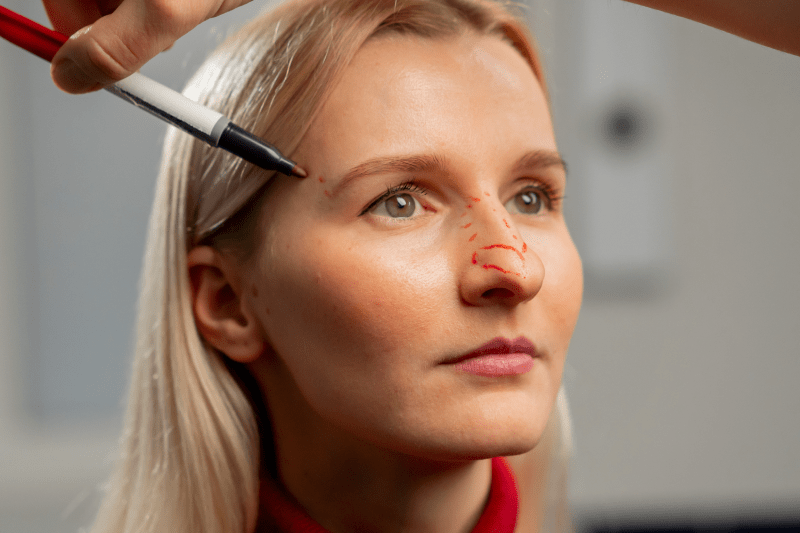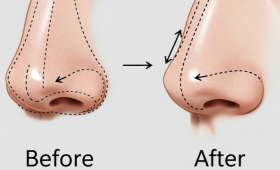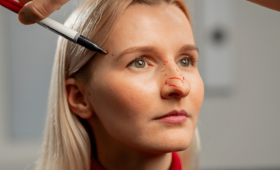What is the average cost of a rhinoplasty surgery in Sweden?
The cost of a rhinoplasty surgery in Sweden varies greatly depending on the complexity of the operation, the surgeon’s experience, and the city where the clinic is located. On average, the cost of a rhinoplasty operation ranges from SEK 40,000 to SEK 70,000.
These prices may include the surgeon’s fee, operating room costs, anesthesia, and post-operative care. Prices are generally more expensive than in other countries due to high living standards, strict health regulations, and high taxes. Therefore, it is important to ask for a detailed breakdown of all costs before the operation.
What services are included in the price?
In Sweden, rhinoplasty surgery prices are generally offered as an all-inclusive package. These packages cover the surgeon’s fee, the anesthesiologist’s fee, hospital costs for operating room use, and necessary equipment. In addition, a few post-operative check-up appointments and necessary bandages or splints are also usually included in the price.
However, additional costs such as painkillers or other medications prescribed after the surgery may not be included in the package. Services such as pre-operative consultation and 3D simulation may sometimes be subject to an extra charge.
What are the most important factors affecting the price?
The most important factors affecting the price of rhinoplasty are the surgeon’s experience, the location of the clinic, and the complexity of the surgery. A highly specialized and experienced surgeon may charge a higher fee than a less experienced one. Clinics in large cities such as Stockholm or Gothenburg are generally more expensive than those in smaller cities. While primary rhinoplasty surgeries are more affordable, revision rhinoplasty surgeries, which are performed on patients who have had a failed surgery before, significantly increase the cost as they require more time and expertise.
Does insurance cover rhinoplasty surgery in Sweden?
Rhinoplasty surgery in Sweden is generally not covered by health insurance as it is considered a cosmetic operation. Insurance companies exclude operations performed for cosmetic purposes from their coverage. However, if the rhinoplasty is due to a medical problem, for example, if there are breathing problems due to a deviated septum, part or all of the surgery may be covered by insurance. In this case, you should first consult an ear, nose, and throat specialist and contact your insurance company to clarify the situation.
How can I find a good rhinoplasty surgeon in Sweden?
One of the most reliable ways to find a good rhinoplasty surgeon in Sweden is to check if the surgeon is a member of official organizations such as the Swedish Association of Plastic Surgeons. These memberships show that the surgeon meets certain training and ethical standards. In addition, you can review online platforms with patient reviews and ratings, and evaluate before and after photos on the clinic’s website. The best approach is to meet with several surgeons and choose the one that is most suitable for you.
How does the pre-operative consultation process work?
The pre-operative consultation is one of the most important stages of the rhinoplasty process. During this meeting, the surgeon evaluates the patient’s expectations, medical history, and nose structure in detail. To achieve a natural-looking result that is proportionate to the other features of the face, the surgeon can use digital imaging technologies to show the patient their possible post-operative appearance. This meeting is a great opportunity for the patient to ask all their questions about the surgery and increase their trust in the surgeon.
How long does the surgery take?
The duration of rhinoplasty surgery varies according to the complexity of the operation. On average, primary rhinoplasty surgeries take between 1.5 and 3 hours. If the surgery is a more complex case or a revision surgery, this time may be even longer. The surgeon’s technique, the extent of the changes to be made to the nose, and the speed of the anesthesiologist are factors that directly affect the duration of the surgery.
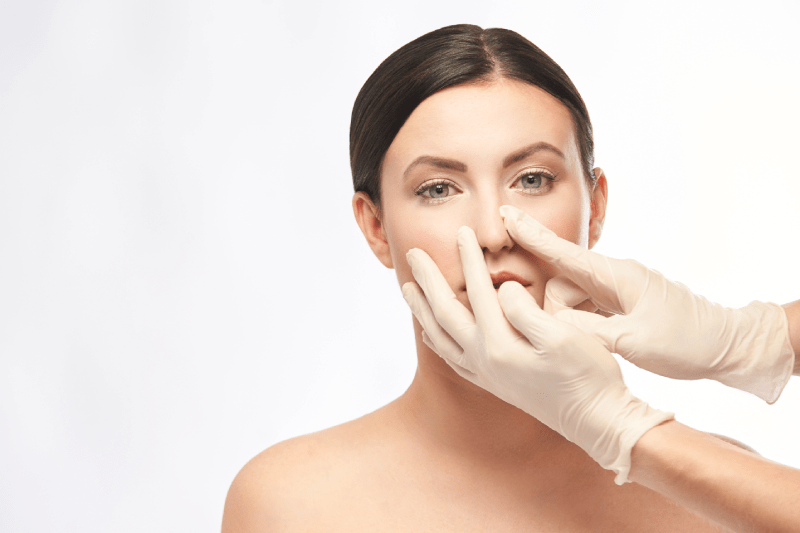
How long does the post-operative recovery process take?
The post-operative recovery process is felt significantly in the first few weeks, but full recovery can take up to a year. In the first 1-2 weeks, swelling and bruising are at their highest level, and a cast or splint is placed on the nose. After the splint is removed, the swelling gradually decreases. Most of the recovery occurs within the first 3-6 months, but it may take 12-18 months for the small swelling at the tip and on the bridge of the nose to completely subside. It is very important to be patient and follow the doctor’s instructions during this process.
What is the level of pain after the surgery?
The level of pain after rhinoplasty surgery is generally less than expected and is at a manageable level. The pain felt immediately after the surgery can be easily controlled with painkillers prescribed by the doctor. Most patients report not experiencing significant pain other than a slight discomfort and fullness in the first 24-48 hours after the surgery. Post-operative nasal congestion and mild pain can be alleviated with painkillers.
When do bruising and swelling go away?
Bruising and swelling after rhinoplasty are a natural part of the recovery process. Bruises under the eyes and around the nose usually disappear within the first 1-2 weeks. The swelling gradually decreases. In the first month after the surgery, most of the swelling subsides. However, the fine swelling at the tip and on the bridge of the nose can last longer. It takes between 6 months and 1 year to completely subside. Applying a cold compress and keeping the head elevated during this process helps to reduce the swelling.
When can I return to work?
The time to return to work depends on the type of job you do and your personal recovery speed. If you work in a desk job, you can return to work 1 to 2 weeks after the surgery. If you work in a physically demanding job that involves heavy lifting, this period can be extended to 4 to 6 weeks. It is normal to feel tired and be distracted by swelling in the first few weeks, so it is best to talk to your doctor to determine the most suitable time.
When can I start exercising after the surgery?
It is important to start exercising gradually and with your doctor’s approval after the surgery. Light activities like walking can be done for the first 2-3 weeks. After 4-6 weeks, you can slowly start cardio exercises and weight lifting. It is vital to avoid sports that carry the risk of getting hit in the nose area (basketball, football, etc.) for at least 6 months after the rhinoplasty operation. This is a critical step to protect the recovery process.
Will there be a scar after the surgery?
The possibility of scarring after rhinoplasty surgery varies according to the surgical technique used. In the “closed rhinoplasty” technique, since the incisions are made inside the nostrils, there is no visible scar on the outside. In the “open rhinoplasty” technique, a small incision is made in the area called the columella that separates the nostrils. This incision is very small and fades over time, becoming almost invisible. A good surgeon works meticulously to minimize scarring and minimize visible scars.
What are the advantages of getting surgery abroad instead of in Sweden?
The biggest advantage of getting surgery abroad instead of in Sweden is cost savings. In countries like Turkey, Poland, and the Czech Republic, services of the same quality can be offered at more affordable prices compared to Sweden. In addition, some countries may have more surgeon and clinic options, and appointment waiting times may be shorter. These options can be attractive for patients with budget constraints.
What are the disadvantages of getting surgery abroad instead of in Sweden?
The biggest disadvantages of getting surgery abroad are travel stress, the language barrier, and post-operative follow-up procedures. It can be difficult to reach your surgeon in an emergency, and you may need to travel again for regular follow-ups during your recovery process. In addition, it can be difficult to be aware of legal processes and patient rights in a different country. To reduce these risks, it is important to choose clinics with international accreditations and experience in patient services.
Are the results of rhinoplasty surgery permanent?
The results of rhinoplasty surgery are permanent when done correctly and well cared for by the patient. The surgeon reshapes the cartilage and bone structure in the nasal skeleton. These changes are permanent. However, the aging process, environmental factors, or blows to the nose can cause small changes in the shape of the nose. To preserve the final result of the surgery, it is important to avoid nasal trauma and maintain a healthy lifestyle.
Is revision rhinoplasty more expensive?
Yes, revision rhinoplasty surgery is generally more expensive than the first surgery. The main reason for this is that revision surgeries are more complex. The scar tissue and changes in the cartilage structure that occur after the first surgery make the surgeon’s job more difficult. Revision surgery requires more time and special surgical skills. Therefore, it is vital to choose a more experienced and specialized surgeon in this area for revision surgery.
What surgical techniques are used?
Two main surgical techniques are used in rhinoplasty: open rhinoplasty and closed rhinoplasty. In open rhinoplasty, a small incision is made in the columella area that separates the nostrils. This technique allows the surgeon to see the nasal structure more clearly. In closed rhinoplasty, all incisions are made inside the nostrils, and there is no visible scar on the outside. Both techniques are suitable for different situations, and the decision on which technique to use is made with your surgeon’s advice.
Is the surgery performed under general anesthesia?
Yes, rhinoplasty surgery is usually performed under general anesthesia. General anesthesia ensures that the patient is completely asleep during the operation and does not feel any pain. Depending on the complexity and duration of the surgery, the anesthesiologist injects the right amount of medication. In some small revision operations, local anesthesia may be preferred. However, most rhinoplasty clinics in Sweden prefer general anesthesia for patient comfort and safety.
What tests are done before the surgery?
Various tests are performed before the surgery to evaluate your general health status. These tests usually include standard checks such as blood tests, an ECG to show heart function, and a lung X-ray. These tests are of critical importance to determine if there is any risk during anesthesia and surgery. The results of these tests reveal whether there is any condition that would prevent the surgery.
Is it necessary to pay attention to nutrition after the surgery?
Yes, post-operative nutrition is important to speed up the recovery process. In the first few days, soft and easy-to-chew foods should be preferred due to swelling and sensitivity. It is important to avoid hot and spicy foods as they can increase swelling. Drinking plenty of water is necessary to keep the body hydrated and support the recovery process. Alcohol and caffeine consumption should be limited as they can increase swelling.
Who is the most suitable candidate for rhinoplasty?
The most suitable candidate for rhinoplasty is an individual who is in good general health and has realistic expectations from the surgery. It is important that the nose has completed its development (usually 18 years and older). It is a critical factor for the success of the recovery process that the candidate does not smoke or quits at least a few weeks before the surgery. In addition, it is also important to be psychologically ready for the surgery and the recovery process.
In which cases is rhinoplasty surgery not performed?
Rhinoplasty surgery is not performed on individuals with chronic diseases, serious respiratory problems, or psychological disorders that would prevent the surgery. Especially uncontrolled diabetes, heart diseases, or bleeding disorders pose a risk for the surgery. In addition, women who are pregnant or breastfeeding are not suitable candidates for this operation.
Are special services offered for patients coming from abroad?
Since Sweden is not a very popular country for medical tourism, the services offered specifically to foreign patients may be limited. Patients usually have to organize all the logistical details such as accommodation, transfer, and interpreter themselves. Clinics can usually communicate in English, but in some cases, it may be necessary to arrange an interpreter to overcome the language barrier.
How are aesthetic surgeons supervised in Sweden?
Aesthetic surgeons and clinics in Sweden are strictly supervised by organizations such as the Health and Welfare Authority (Socialstyrelsen) and the Swedish Association of Plastic Surgeons. These inspections ensure that the professional competence and ethical standards of the surgeons are constantly checked. There are also official mechanisms where patients can submit their complaints and find a solution. This aims to keep patient safety at the highest level.
How can post-operative bruising be reduced?
There are a few things that can be done to reduce post-operative bruising. The most important thing is to regularly apply a cold compress within the first 48 hours. Sleeping with a few pillows to keep your head elevated also helps reduce bruising. Avoiding physical activities after the surgery, stopping smoking and alcohol consumption, and drinking plenty of fluids also help the bruising to pass more quickly.
Why is smoking and alcohol consumption prohibited during the recovery process?
Smoking and alcohol are the most important factors that negatively affect the recovery process. Smoking narrows blood vessels, reducing blood flow to the tissues, which slows down the recovery process. It also increases the risk of infection and can lead to anesthesia complications. Alcohol thins the blood, increasing the risk of bleeding and can increase post-operative swelling. Therefore, it is vital to avoid them for at least 2 weeks before and after the surgery.
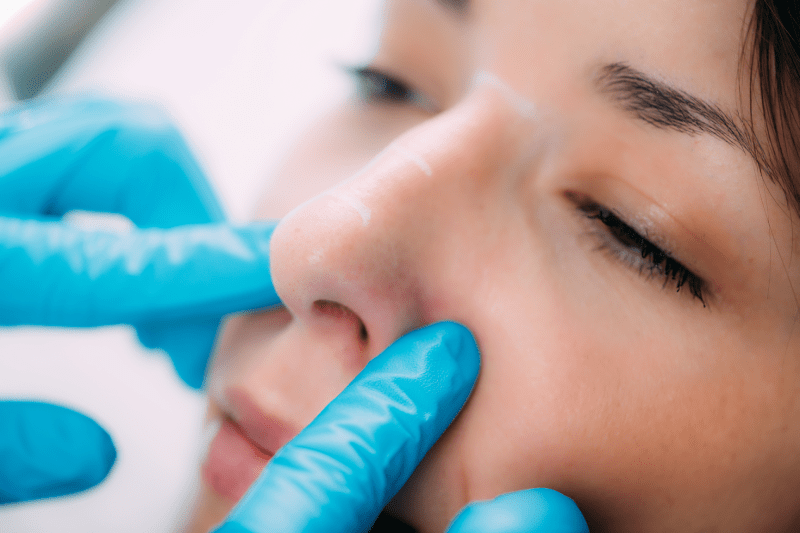
When can I see the results of the surgery?
The first results of the surgery can be seen immediately after the splint is removed, but this appearance is not the final result due to swelling. While most of the swelling subsides within the first 3-6 months, you need to be patient for up to 1 year for the final result. The fine swelling, especially at the tip and on the bridge of the nose, disappears more slowly than in other areas. It is important to go to regular follow-up appointments with your surgeon to see the final result of the surgery completely.
How many days do you stay in the hospital after rhinoplasty surgery?
Rhinoplasty surgery is usually an outpatient procedure, which means the patient can be discharged on the same day. The hospital stay after the surgery usually does not exceed a few hours. However, in some complex cases or depending on the patient’s general health condition, the doctor may recommend a one-night hospital stay. This is done to safely monitor the patient and detect possible complications early.
Can other surgeries be performed with rhinoplasty?
Yes, other facial aesthetic surgeries can be performed in the same session as rhinoplasty. The most common combinations include eyelid aesthetics (blepharoplasty), chin aesthetics, or facelift surgeries. These combination surgeries help to improve the patient’s overall aesthetic appearance in a more holistic way. However, such combinations can extend the duration of the surgery and significantly increase the cost.
What is the importance of a one-on-one consultation?
A one-on-one consultation is the most critical step before rhinoplasty surgery. This meeting allows both the patient and the surgeon to clarify their expectations. The surgeon evaluates the patient’s nose structure, skin quality, and facial features in detail. In addition, the patient can ask all their questions about the surgery and learn about the potential risks. This meeting is vital for the patient to trust their surgeon and to form a solid basis for the decision to have surgery.
Why do prices vary between cities?
Rhinoplasty prices in Sweden can vary significantly between cities. In large cities such as Stockholm and Gothenburg, the operating costs of clinics (rent, staff salaries, etc.) are higher, so the prices are generally higher. In addition, surgeons in these large cities may have a larger patient portfolio and may charge higher fees. In smaller cities where there is less competition, prices may be more affordable.
Is there a right season for the surgery?
The most suitable season for rhinoplasty surgery is generally autumn and winter. Cold weather can help reduce swelling and edema that may occur after the surgery. In addition, since sun exposure should be avoided for at least 6 months after the surgery, these months when there is less sun are more advantageous. It can also be more uncomfortable to walk around in hot weather with a splint and bandages on your face.
Are tampons used after the surgery?
Yes, it is a common practice to use tampons after rhinoplasty surgery. Tampons are used to stop post-operative bleeding, support tissue healing inside the nose, and stabilize the new nasal structure. They are usually removed a few days after the surgery. Silicone tampons produced with modern technologies are less uncomfortable and easier to remove than old-generation tampons.
What questions should I ask the surgeon?
There are important questions you should ask your surgeon during the pre-operative consultation. These include the surgeon’s experience, their expertise in this field, before and after photos of the surgeries they have performed, the surgical techniques used, the potential risks and complications of the surgery, the post-operative recovery process, and the details of the total cost. All these questions will help you create a clear picture of the surgery.
How can post-operative bruising be hidden?
Post-operative bruising and swelling can affect daily life. Wide-framed sunglasses or bandages can be used to hide this condition. Since bruising usually disappears within the first 1-2 weeks, you can prefer to stay at home or stay away from social events during this process. Makeup can also be an effective way to hide bruising, but it is important to be careful not to wear makeup until the scars are completely healed.
What is the right age for nose surgery?
The most suitable age for rhinoplasty is the age at which the nose has completed its development. This age is generally around 16-17 for females and 17-18 for males. Surgeries performed before this age can negatively affect the development of the nose. In exceptional cases, due to medical reasons (for example, serious respiratory problems), surgery can be performed at an earlier age, but this depends on the surgeon’s decision.
